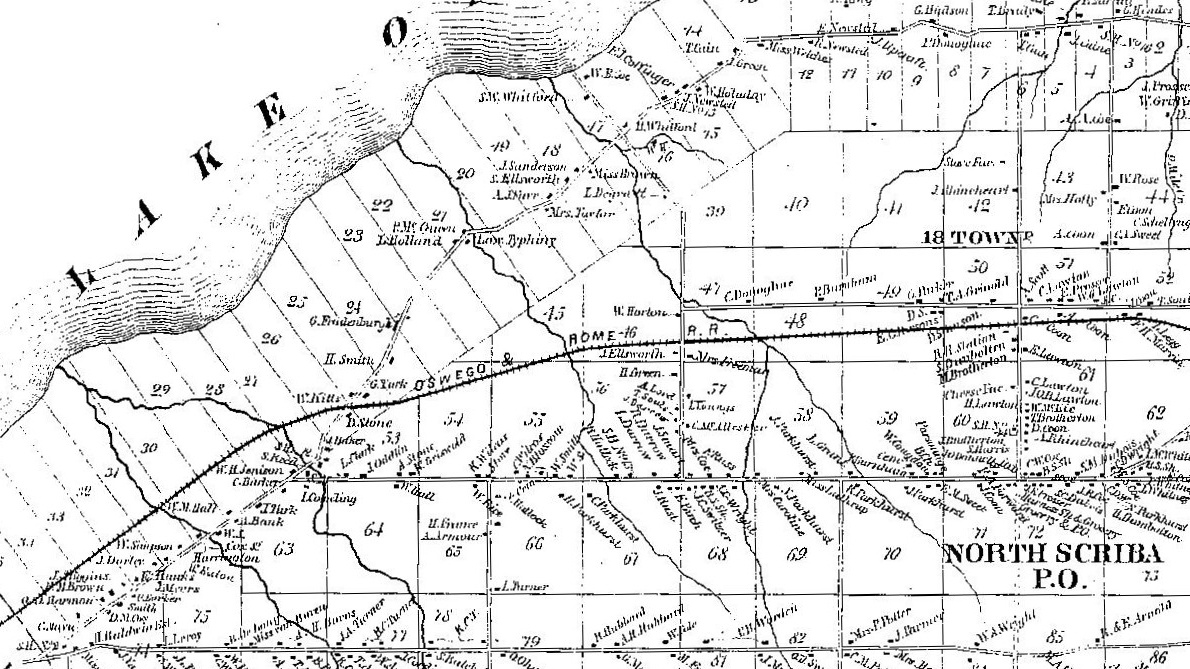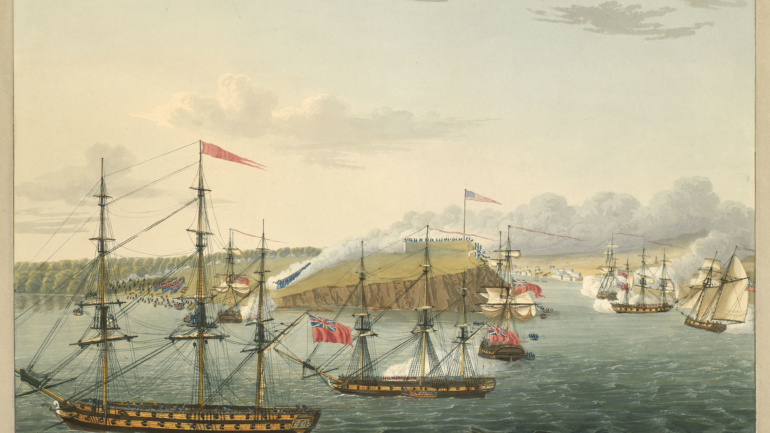Orrin Stone was an Oswego County pioneer. A son of Jehiel and Ruth Norton Stone of Guilford, Connecticut, he accompanied his parents and nine brothers and sisters to a site near Ovid, Seneca County, New York, then a part of the Military Tract. After a brief residence there the Stones in company with their neighbors, the William Burts, resettled in Scriba. Tradition relates that they reached Oswego via the Seneca-Oswego waterway, driving their livestock along the streams. They proceeded to Scriba Corners along a crude trace. The Stones occupied the land just east of the Corners, the Burts, a tract to the west. At the time of their arrival in 1803, Orrin was 14.
There was sufficient land for the numerous sons and daughters, and Orrin was preparing to move from the family cabin to one of his own when he made the initial entry in his diary. The date was January 1, 1814, he was aged 25. He was planning to take a wife; and there were almost endless details requiring his attention.
A perusal of the terse observations through a period of several years leaves many questions unanswered; yet a partial pattern of frontier life evolves. Hard labor was a routine.
In the winter months he was busy “chopping” to level the forest in preparation for fields and crops. In the course of a year he spent between 65-75 days chopping, logging and splitting, and additional days at woodworking, fence building, and hauling. In March and April chopping yielded to “sugaring”. Preparing troughs, tapping trees, sap gathering and boiling syrup absorbed most of his working hours for about three weeks. And before April yielded to May he turned to plowing, and later to planting and hoeing. The diary indicates some 30 to 40 days’ labor in plowing for wheat, corn, oats, potatoes, and garden vegetables. Uncounted hours were also consumed in the orchard in planting, grafting and tending. The harvesting of hay, wheat, potatoes, oats, and corn became the principal occupation from July through October.
In between times he “laid my chamber floor”, calked or “mudded” his cabin, mended fences, drove his hog or cow to be bred (sometimes over considerable distances), marketed his potatoes or ashes in Oswego, and borrowed his father’s oxen to carry his grain to the mill.
There was a respite from heavy toil on Sundays when there were occasional “meetings” in the school house at the Corners or in Hiel Stone’s barn. A local lay-preacher conducted the Baptist service. Recreation was found in “raisings” and “bees” and singing school. Stone occasionally went hunting and fishing, but took special delight in searching for bee trees in the woods.
He also belonged to local militia, and sometimes accepted the duty of conveying the “warning” to the members. In an emergency in 1814 attending the War of 1812 he accompanied the militia to Henderson Harbor. The only detailed incident in the record (a brief paragraph) relates the invasion of Oswego in May of 1814.
In later life Stone was a postmaster, storekeeper and farmer. He died in 1876, aged 88. Orrin’s father, Hiel Stone, was a major in the war of 1812. Orrin and his brother both served in the war of 1812.

January 1st 1814S 1: Choping on a job for George W Burt in Hannibal
–
M 3: Choping E. Stone half day. 1-34
T 4: Choping with E. Stone
W 5: Choping with E. Stone
Th 6: I was Choping Erastus
F 7: Choping with E. Stone
S 8: Choping on the job with E.S and then went home in the evening
S 9: Was at Fathers _?_
M 10: Father & Mother started on a visit to the genesee Thrashing wheat p.m.
T 11: Thrashing part of the day
W 12: Thrashing W AM E. Stone PM got ready and went to A.M. Butler’s ball
Th 13: Finished thrashing wheat Erastus S part of day
F 14: _?_ Wheat and put it up _?_
January the 15 of 1814S 15: Got home a load of Cherry boards from Taylors saw mill
S 16:
M 17: Went with E. Stone to G. W. Burts A.M P.M. Choping on the _?_
T 18: Choping with E.S.
W 19: Choping with E.S.
Th 20: Choping with E.S.
F 21: Choping with E.S.
S 22: Choping with E.S.
S 23: Rode in sleigh with G.W. Burt to Oswego falls lower landing and then came back a foot
M 24: Choping E.S.
T 25: Choping with E.S.
W 26: A. M Finished our Job
Th 27: P.M. Went home


January the 27 of 1814Th 27: Had Fathers horses and sleigh to draw a load of boards from Osw
F 28: Went with Anson Stone after wolves but could not catch any, laid my chamber floor
S 29 Drawed a load of boards with the oxen from the river
_?_
M 31: Drawed two load of boards with the horses from river
February the 1 — 1814
T 1: drawed board from Oswego
W 2: Hubbard Church drawed wood for me part of the A.M with their oxen
Th 3 with a _?_ sleigh & horses
F 4
S 5: Went to Brayton’s mill P.P. went to Oswego D bought 3 white plate 60
S 6: Went to _?_
M 7: Took a clock to pieces and cleaned it.
T 8: Makeing a cupboard
W 9: Ditto
Th 10: Went to Oswego with team got part of a load of boards and two small _?_ bailed
February the 11 1814F 11: A.M. helped Mr. Lorenus fan wheat with a faning mill P.M. verry stormy & windy
S 12: Finished my Shelves _?_
S 13: _?_
M 14
T 15: Making Oars _?_
W 16: This evening waited on a girl to Mr Buels to see Mr Town perform his _?_
Th 17: P.M. Went into the woods and found two bee trees
F 18: I was runing about and not doing much of any thing
S 19: Shaving oars choped wood
S 20: Went to Mr J. Worden to meeting _?_
M 21: Went out with Father to look for a Bee tree found none P.M. moved my Chest to my house and some other things


February the 22 1814T 22: Bought 86 lbs pork of Father P.M. to work with E. S making oars
W 23: Cut down an ash tree for sap troves blocked off thirty one
Th 24: Went to collect an execution of Holden Corp a rainy day
F 25: Went to Oswego with J. Garner took my 5 _?_ kettle to _?_
S 26: Choped out 20 sap troves S
27: Went to Mr. Wordens to Mr. Baldwin Meeting M
28: Choped some snowy day
March the 1 1814
T 1: Attended Town Meeting at Fathers
W 2: Went to Mexico to _?_
Th 3: Come from Mexico home Snowed all day from S.W.
F 4: To work about home
S 5: To work about home
Scriba March the 7 1814
M 7: Made 15 sap troves
T 8: Fixing to make shugar
W 9: Had Fathers horses and sleigh and drawed a load of cherry boards from Taylors mill
Th 10: to Work here and there
F 11: Went to Oswego _?_
S 12: to work about home
S 13: Went to Mexico _?_
M 14: come from Mexico home and drawed some fire wood
T 15: AM to work PM went ot Fathers to an extra town Meeting _?_
W 16: To work in the house
Th 17: Went and cut off a black ash not for a _?_ or two
F 18: Tapt part of my shugar bush sap ran verry well
S 19: Taped a few more _?_ Boiling sap ran verry well
S 20: Hired Hubbard Church to boil sap and I went to _?_


Scriba March the 21 1814
M 21: boiling sap
T 22: Went to Oswego with Father and Mother on the sleigh
W 23: Made 25 lb shugar
Th 24: Choping fire wood Wm. Burt
W 25: AM Choping for Wm Burt PM shugared off some _?_
Th 26: Went to F.S. Morgans carried some shugared at 18 pence per lb
F 27: Rode out in a sleigh to Solomon Everts and I was Married to Mss Sally Everts, Orrin Stone Married by David Easton Esq.
M 28: AM Came home from Mr. Everts home PM to work in the shugar bush
T 29: Hubbar Church and my self Shugared off some surrep _?_ 27 lbs of sugar of which I _?_
W 30: Went to Esq Croker and Oswego falls Bought a set of knives and forks and some crockery of which I have bill
Th 31: Boiling sap
Scriba April the 1 1814
F 1: to work making shugar
S 2: to work




